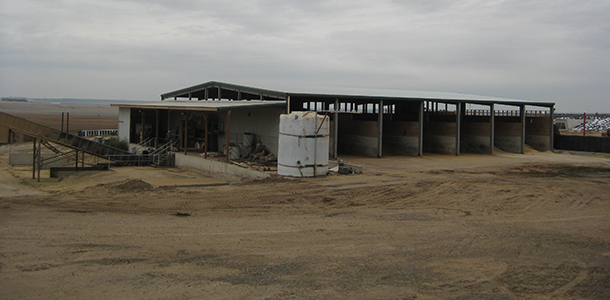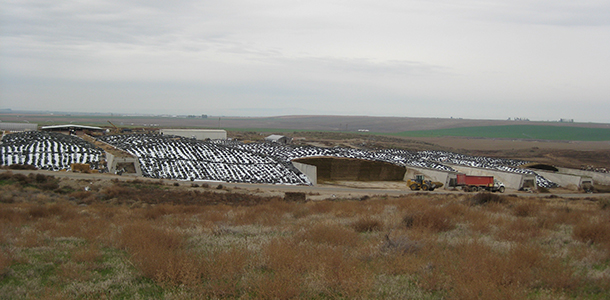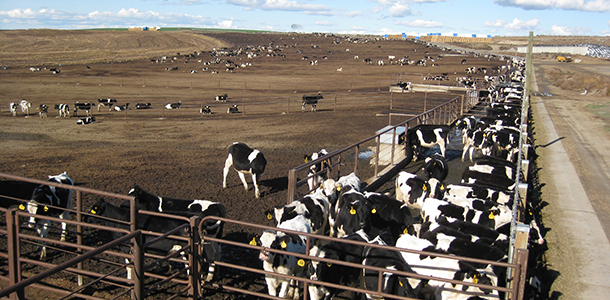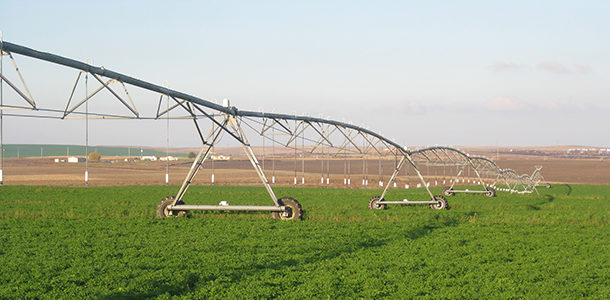While farmers work to ensure that each cow is producing close to her maximum yield, financial and labor restraints require some degree of ubiquity, particularly when it comes to feeding. However, Dick Bengen has developed a successful compromise.
Ruby Ridge Dairy is owned and operated by Bengen and his wife, Ruby. Residing in Whatcom County in Washington state since 1967, the couple moved the farm to Pasco, Washington, in 2006. Their herd grew from 1,000 to 2,300 lactating cows in addition to 2,100 heifers, and their available acreage for harvesting also increased to 2,200 acres.
This land supports the production of corn silage, alfalfa and earlage. On a hay basis, 8.5 tons of alfalfa are harvested per acre. The first, second and fifth cuttings are used for haylage and the third and fourth for hay.
While the challenge at the farm’s old location was excessive rainfall, now the harvesting of hay in high heat threatens its quality. For this reason, high-desert hay is imported for top-producing cows. In addition, corn crops average a 38 percent starch value.
To conserve money, water and organic matter, corn is no-tilled. In addition, manure is applied to open fields for nutrient preservation. Cows are not turned out to pasture for free grazing as an energy maintenance measure.

Converting quality seeds purchased from reputable companies into valuable feed, Bengen claims, is essential in today’s market.
“You can’t rely on outside sources,” he says. “The California model is broken. So, you need a land base for two reasons: One is to grow feed, and the other is to utilize nutrients. Animal agriculture without a land base is not going to be as competitive as animal agriculture with a land base.”
But the efficiency in Bengen’s feed production only begins at harvest. The producer takes great care to preserve the nutritional value of his feedstuff during processing and storage.
“As soon as you decide to harvest, from that day on you certainly aren’t going to make the feed any better. It can only get worse. The quality can only drop; we can’t improve it,” says Bengen.
For this reason, feed is stored in 10 well-managed bunkers. Each has sides lined in plastic to varying depths and is packed to appropriate densities depending upon the moisture level of its contents.
They are faced daily to minimize losses from heat and sun exposure and capped daily with a layer of oxygen-barrier film and a second of conventional plastic. Bengen emphasizes the importance of ensuring the first forages in the bunkers are the first ones out.
But feed mixing and delivery is truly when Ruby Ridge’s system amalgamates efficiency and personalization. Ten specialized diets are mixed three times daily for lactating cows, each with varying support levels. Cow needs are assessed weekly and animals moved accordingly.
Upwards of nine workers assist with this process, their work simplified by the ease of turning dials to release forages and supplemental ingredients, which are weighed in load cells. Bengen says that while they may transport their mixer box between the feed mills and animals more than most, this highly specialized system maximizes production over feed costs.
“Years ago, when we would be milking the cows, we were physically under the cow, milking the cow,” he recalls. “Then we walked up and started whatever the concentrate was.
And at that point, we didn’t feed every cow the same thing. We looked at a cow, and if we thought she was too thin, we said, ‘Oh, let’s give her another scoop.’ We are trying to individualize cows as much as we can and still have a fairly decent-sized dairy.”
This system requires a lot of human management, and thus the farm’s 40 workers are usually cross-trained in multiple disciplines. Everything from pushing and milking to harvesting, construction and maintenance is done in-house.
While this can present difficulties, Bengen believes that variety helps retain enthusiasm as well as enables workers to move between jobs if circumstances dictate.
The Washington dairyman has attended several national and international conferences to present on his production methods and offer large farms a different perspective.
Besides his feeding system, he has also discussed personalized A.I. practices that determine the proper time for sperm introduction not by a predetermined, universal cycle but by analysis of the weight and milk production of individual animals.
“Most dairy farmers are in a direct, friendly competition with each other,” says Bengen. “Most ideas that they have, they are very willing to share. It is kind of a unique thing. It isn’t like Microsoft versus Apple; that is not friendly competition. The dairy industry tends to be pretty open when it comes to stuff like that. It is kind of neat.”
From crop storage to feed delivery, Bengen is redefining the standards for large dairy operations. However, he remains open-minded.
“All dairymen have different ways of getting from point A to point B. Our way isn’t right, but for the way we want to run things, it is.” FG
Holly Drankhan is a senior at Michigan State University with plans to attend vet school. She is a 2014 Progressive Publishing editorial intern.
PHOTOS
Dick and Ruby Bengen base their dairy on 2,200 acres in Whatcom County, Washington. Bengen says the land base is essential not only to grow feed but also to utilize nutrients. Feed is stored in well-manage bunkers to preserve quality. Photos provided by Ruby Ridge Dairy











